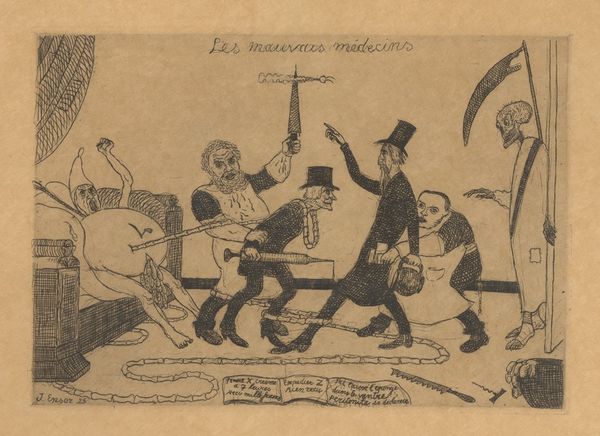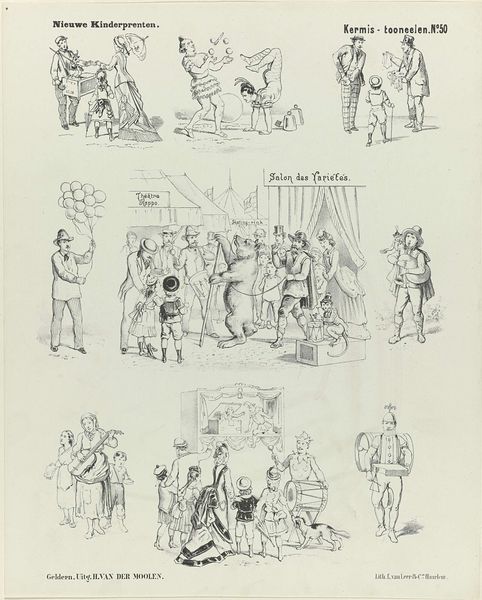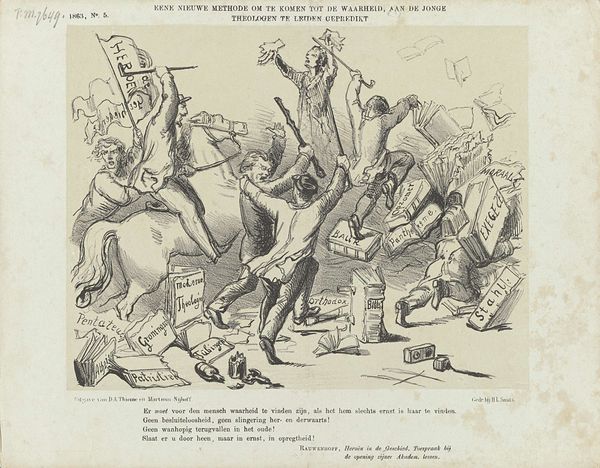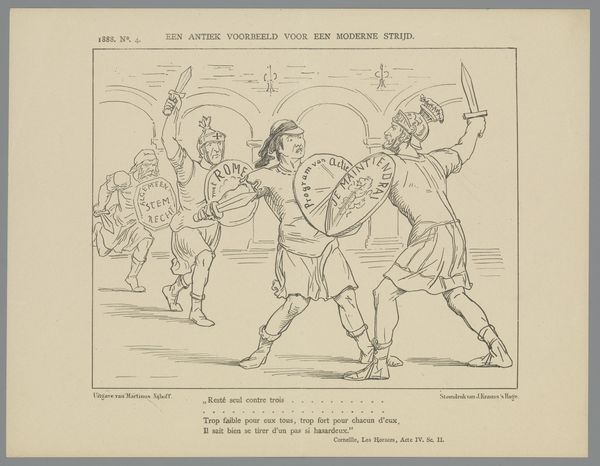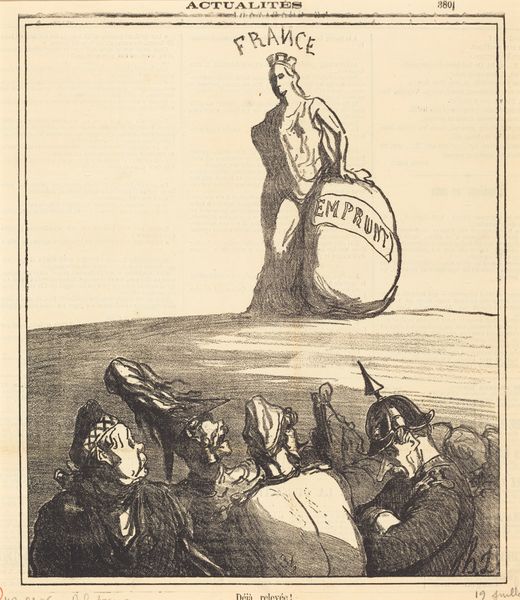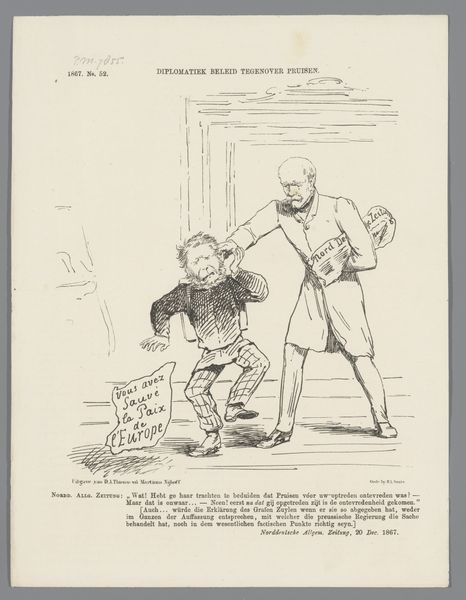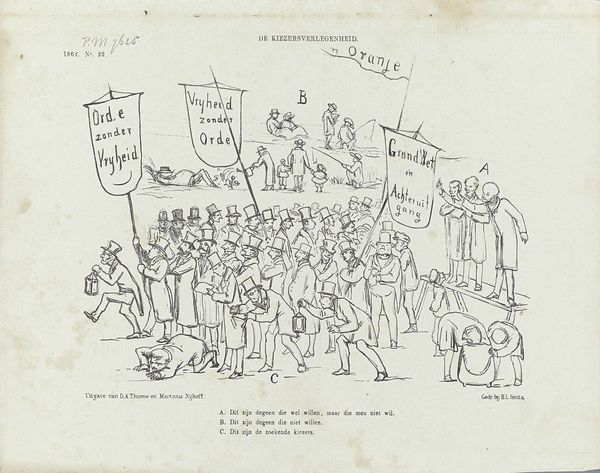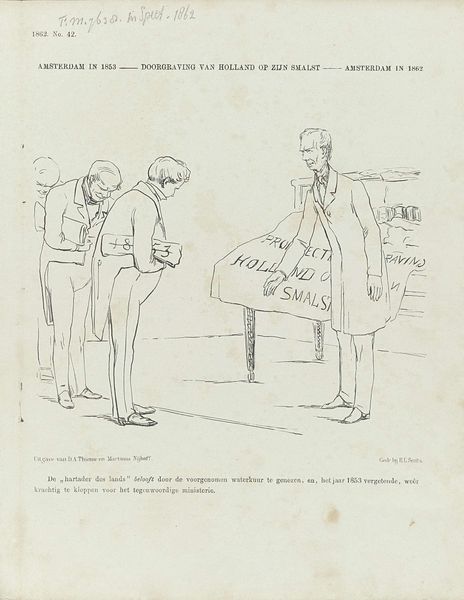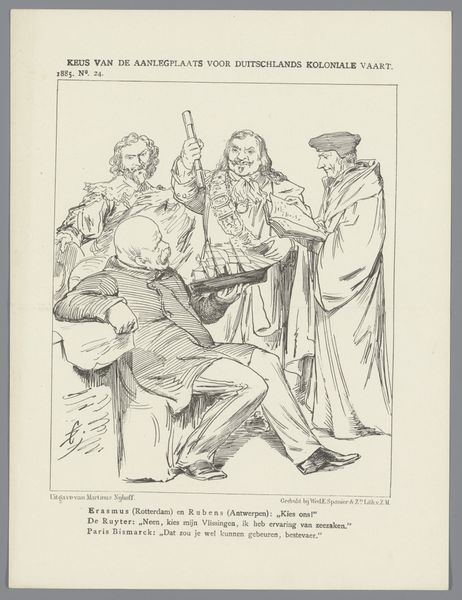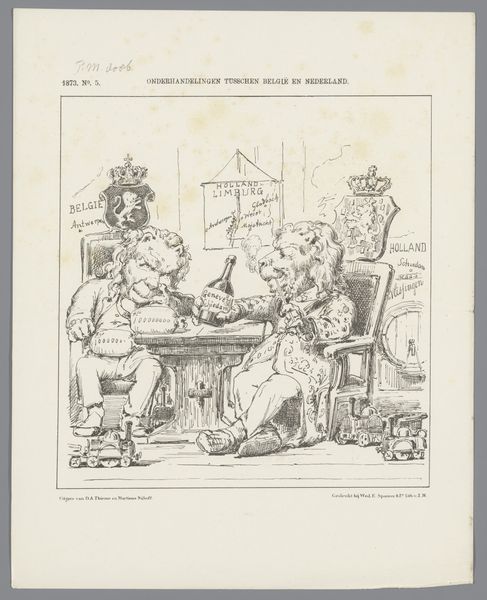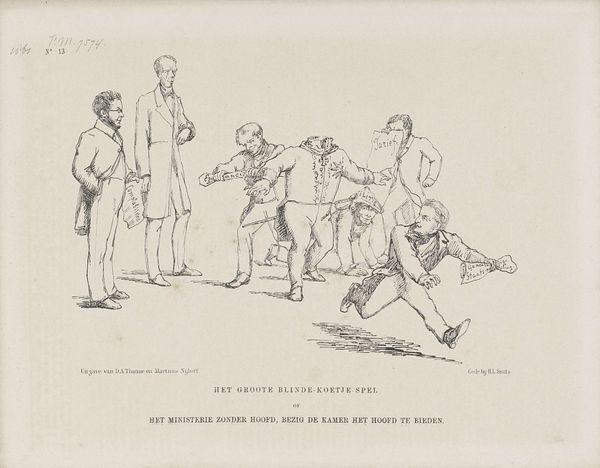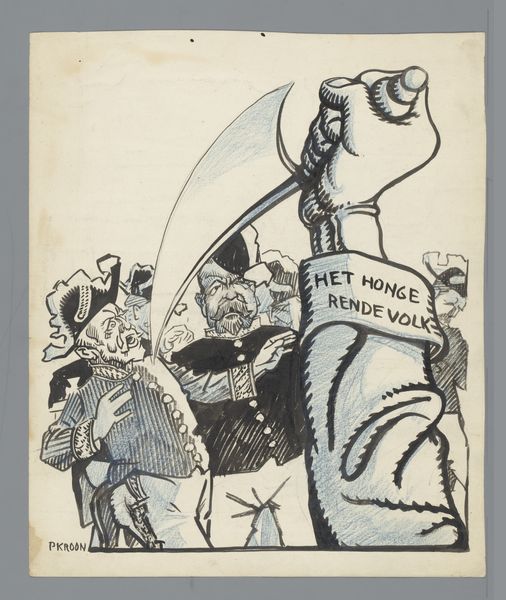
drawing, ink
#
drawing
#
comic strip sketch
#
imaginative character sketch
#
quirky sketch
#
caricature
#
personal sketchbook
#
ink
#
idea generation sketch
#
sketchwork
#
ink drawing experimentation
#
sketchbook drawing
#
genre-painting
#
storyboard and sketchbook work
#
sketchbook art
Dimensions: height 275 mm, width 215 mm
Copyright: Rijks Museum: Open Domain
Curator: This is a drawing by Johan Michaël Schmidt Crans, created in 1863. It’s called "Spotprent op de protectionisten en de novemberfeesten." The medium is ink on paper. Editor: It's lively! There's an energetic sort of chaos to the composition that draws my eye. The whole thing feels like a fleeting moment captured, full of commentary but still very immediate. Curator: The immediate impact comes from its roots as a cartoon, satirizing contemporary issues, and how that directly relates to the materials. We see ink—a replicable material facilitating distribution to a wide audience, indicative of its purpose in shaping public opinion. Consider, too, the paper itself, a relatively inexpensive substrate meant to disseminate visual and textual information rapidly. Editor: That makes total sense. There's something theatrical, almost performative, about the way these figures are presented. Are those carnival masks on the floor? It is intriguing—are these individuals willingly adopting roles, obscuring their true selves for political or social gain? I feel a sense of masquerade. Curator: Exactly! The artwork's title alludes to “de novemberfeesten,” annual November celebrations in the Netherlands, so the masks add an ironic twist. Protectionism was a fiercely debated economic policy. Notice how the figures are clustered and bearing signs. What kind of labor does it take to disseminate and construct public demonstrations? Editor: You’re absolutely right to think about labor. Looking closer, that banner proclaims allegiance to the House of Orange and a kind of nostalgic Dutch nationalism. Is Crans questioning the motivations behind such displays? There's something very sardonic here. I keep thinking, what is being concealed? Curator: What’s being concealed underscores the entire operation of ideology itself. We can see the deliberate construction of political theater, and its effects on viewers and makers, and what materials allow this to exist at all. Editor: Considering it this way definitely provides deeper insights than if I’d looked at it just for its visual appeal. Thanks, I have something to think about. Curator: Likewise!
Comments
No comments
Be the first to comment and join the conversation on the ultimate creative platform.
